Our Products Cannot Be Used As Medicines Directly For Personal Use.


Welcome! For price inquiries, please feel free to contact us through the form on the left side. We will get back to you as soon as possible.
Natural, Modified, and Synthetic Lipids
Lipids, the essential building blocks of life, are a diverse class of hydrophobic or amphipathic molecules that play critical roles in cellular structure, energy storage, and signaling pathways. Their structural diversity and functional adaptability have led to extensive research and application in both natural and engineered forms. Creative Enzymes offers natural, modified and synthetic lipids, each demonstrating their immense importance in science and industry.
Natural Lipids: The Cornerstones of Life
Natural lipids are produced by living organisms and encompass a wide array of structures, including fatty acids, phospholipids, sterols, and glycolipids. These lipids, formed primarily through biosynthetic pathways, fulfill indispensable biological functions.
Structural and Functional Diversity
Natural lipids exhibit remarkable structural diversity, ranging from simple fatty acids to complex sterol derivatives such as cholesterol. Fatty acids are long hydrocarbon chains ending in a carboxyl group, while triglycerides serve as primary energy stores. Phospholipids, integral to cell membranes, have a hydrophilic phosphate head and hydrophobic fatty acid tails, forming bilayers that compartmentalize the cellular environment. Cholesterol, a sterol, modulates membrane fluidity and serves as a precursor for steroid hormones.
Biological Roles
Natural lipids are indispensable for energy storage, cell membrane integrity, and signal transduction. Triacylglycerols provide a high-energy reserve, storing more than double the energy per gram compared to carbohydrates. Phospholipids and glycolipids create barriers essential for cellular compartmentalization, while lipids like prostaglandins act as signaling molecules regulating inflammation, immunity, and vascular tone.
Sources of Natural Lipids
Natural lipids are derived from various biological sources and are classified based on their origin:
Plant-Based Sources
- Seeds and Nuts: Rich in triglycerides, oils from soybean, sunflower, canola, and palm oils provide essential fatty acids and energy.
- Fruits: Avocado and olive are high in monounsaturated fats, and olive oil is a staple in the culinary and cosmetic industries.
- Algae: Microalgae such as Chlorella and Spirulina are emerging as sustainable lipid sources, particularly for omega-3 fatty acids.
Animal-Based Sources
- Dairy and Meat: Animal fats such as lard and tallow are rich in saturated fat and cholesterol and are commonly used in food and industrial applications.
- Fish and Marine Life: Fish oils are prized for their omega-3 polyunsaturated fatty acids such as EPA and DHA, which are essential for human health.
Microbial Sources
- Lipids from bacteria, fungi, and yeast, such as those produced by Yarrowia lipolytica or Mortierella alpina, are gaining traction for biofuel and specialty chemical production.
Applications of Natural Lipids
Natural lipids are versatile and widely utilized across various industries:
- Healthcare and Pharmaceuticals: Phospholipids form liposomes for targeted drug delivery, improving bioavailability and treatment precision. Omega-3 and omega-6 fatty acids are key nutraceuticals for cardiovascular and cognitive health. In topical formulations, ceramides and fatty acids help repair the skin barrier, making them essential in skin care products for hydration and protection.
- Food Industry: Lipids such as edible oils (e.g., olive oil and coconut oil) are staples in cooking, providing flavor and health benefits. In functional foods, plant sterols and fortified spreads help lower cholesterol and support heart health while improving nutrient absorption.
- Energy and Biofuels: Algae-derived lipids are processed into biodiesel, offering a renewable and eco-friendly alternative to fossil fuels. They reduce emissions and are compatible with existing diesel engines, driving adoption in sustainable energy solutions.
- Cosmetics and Personal Care: Natural lipids like shea butter and jojoba oil provide hydration and nourishment in moisturizers, lip balms, and conditioners. Their ability to repair and protect skin and hair makes them ideal for clean beauty and eco-friendly formulations.
- Industrial Applications: Natural lipids are used to create biodegradable lubricants for machinery, eco-friendly paints, and bioplastics. These applications reduce environmental impact, offering sustainable alternatives for manufacturing and packaging.
Limitations in Natural Form
While natural lipids play fundamental roles, their stability, availability and functional specificity can limit their utility in advanced applications. For example, their susceptibility to oxidation and enzymatic degradation is often a challenge for industrial use.
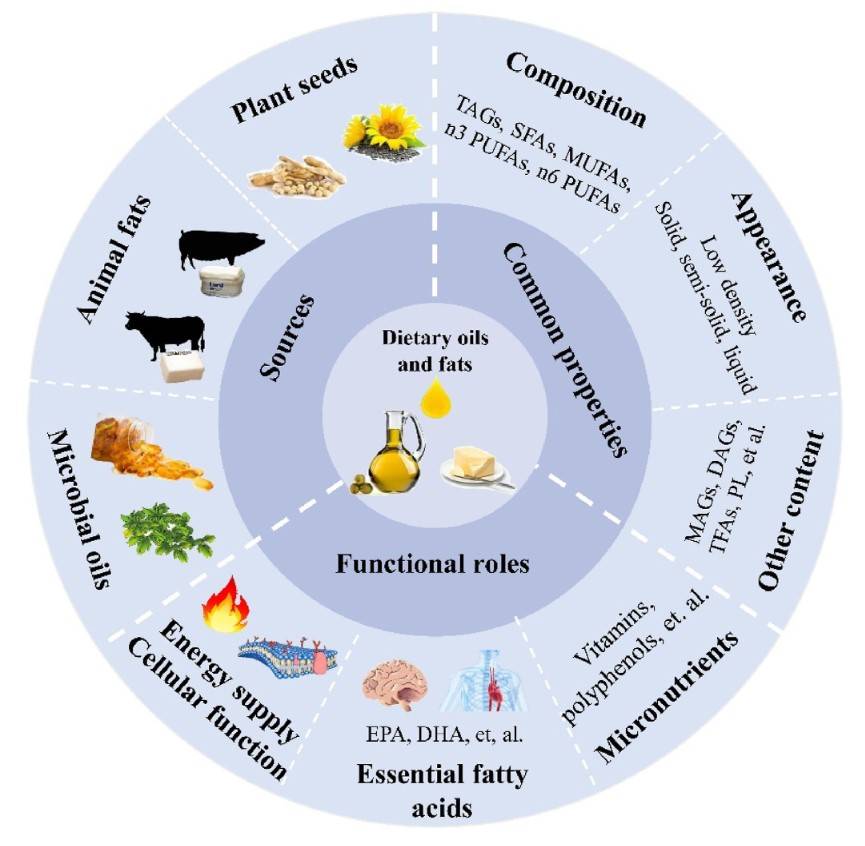 Figure 1: Sources, common properties, and functional roles of the dietary oils and fats. Abbreviations: DAG, Diacylglycerol; DHA, Docosahexenoic acid; EPA, Eicosapentenoic acid; MAG, Monoacylglycerol; MUFA, Mono-unsaturated fatty acid; PL, Phospholipid; PUFA, Poly-unsaturated fatty acid; SFA, Saturated fatty acid; TAG, Tri-acylglycerol; TFA, Trans-fatty acid. (Ye et al., 2021)
Figure 1: Sources, common properties, and functional roles of the dietary oils and fats. Abbreviations: DAG, Diacylglycerol; DHA, Docosahexenoic acid; EPA, Eicosapentenoic acid; MAG, Monoacylglycerol; MUFA, Mono-unsaturated fatty acid; PL, Phospholipid; PUFA, Poly-unsaturated fatty acid; SFA, Saturated fatty acid; TAG, Tri-acylglycerol; TFA, Trans-fatty acid. (Ye et al., 2021)
Modified Lipids: Enhancing Nature's Blueprint
Modified lipids are naturally occurring lipids that have been chemically or enzymatically modified to improve their properties, functionality or stability. These modifications are tailored to meet the requirements of specific scientific and industrial applications.
Types of Modifications
- Hydrogenation: Hydrogenation transforms unsaturated fatty acids into saturated ones, increasing their stability and solidifying their structure. This process is widely used in the food industry to produce margarine and shortening.
- Esterification: Through esterification, lipid-based surfactants are created, which are commonly employed in pharmaceuticals and cosmetics.
- Glycosylation: Glycosylation involves attaching sugar moieties to lipids, yielding glycolipids with enhanced bioactivity and stability, often used in vaccine delivery systems.
Examples of Modified Lipids
Modified lipids are derivatives of natural lipids that have been chemically or enzymatically modified to improve their properties or introduce specific functionalities. Here are a few notable examples:
- Hydrogenated Oils: These are plant-based oils (e.g., soybean or sunflower oil) that have been hydrogenated to convert unsaturated fats to saturated fats. They are commonly used in the food industry for shelf-stable margarine, shortening, and processed foods.
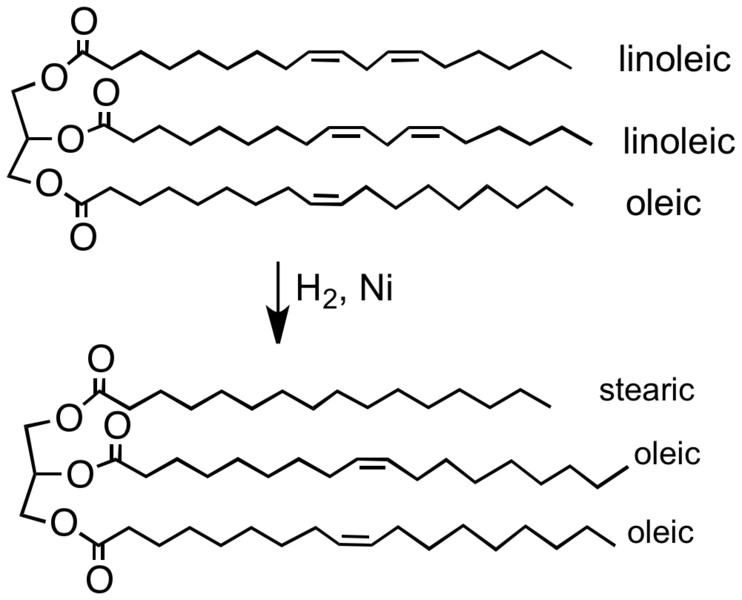 Figure 2: Hydrogenated oil is oil that has all the C=C bonds reduced.
Figure 2: Hydrogenated oil is oil that has all the C=C bonds reduced.
- Structured Lipids: These are triglycerides modified to incorporate specific fatty acids at specific positions. An example is medium-chain triglycerides (MCTs), which are engineered for rapid energy metabolism. Structured lipids are found in sports nutrition, clinical dietary supplements and therapeutic weight management formulations.
- Lipid-Based Nanocarriers: Modified phospholipids such as PEGylated lipids (lipids conjugated with polyethylene glycol) are used in drug delivery systems such as liposomes. Lipid-based nanocarriers deliver drugs with increased bioavailability and reduced side effects, such as in cancer treatment or vaccine delivery (e.g., mRNA COVID-19 vaccines).
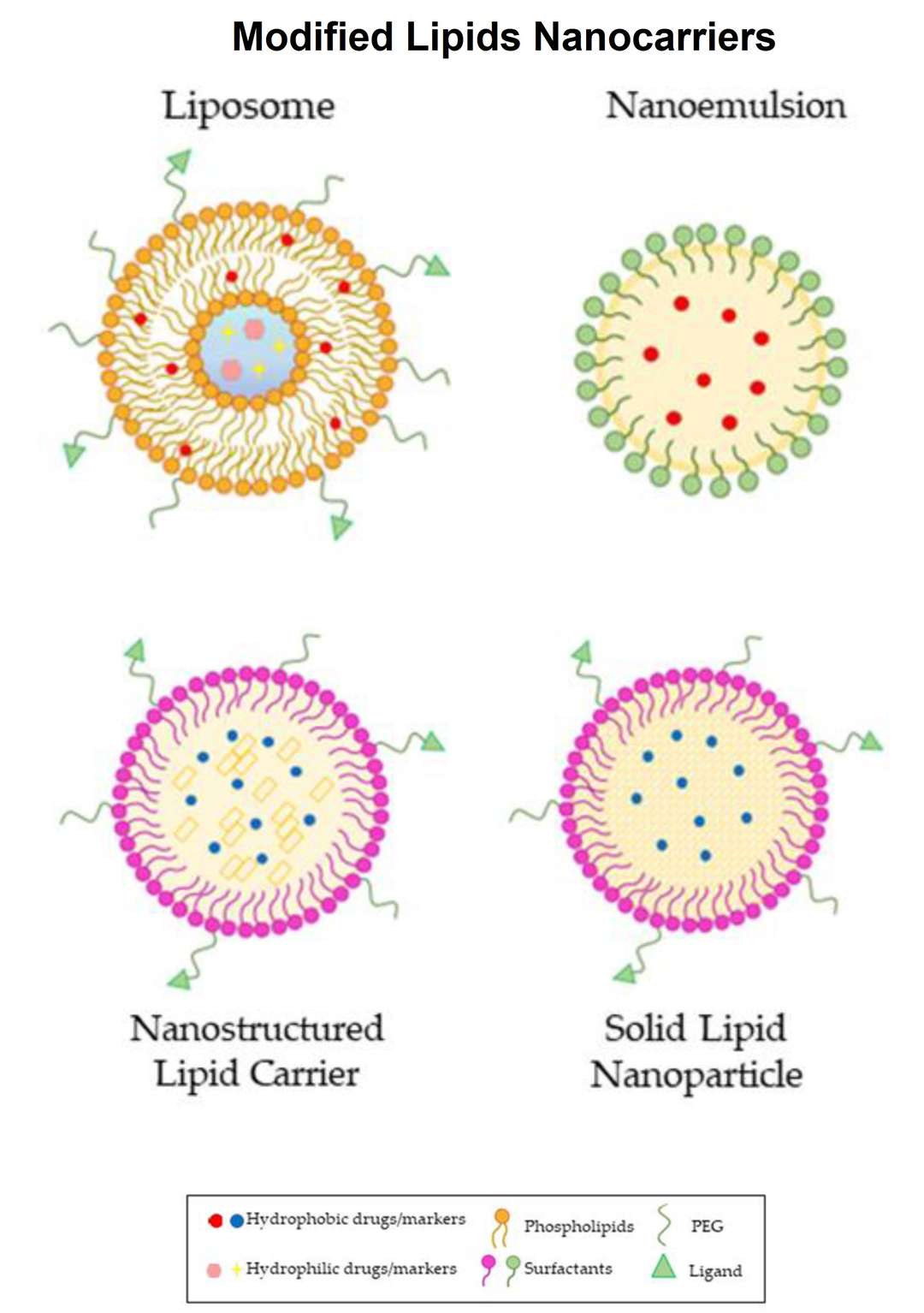 Figure 3: Schematic composition and organization of different types of modified phospholipids nanocarriers. (Adapted from Giordano et al., 2024)
Figure 3: Schematic composition and organization of different types of modified phospholipids nanocarriers. (Adapted from Giordano et al., 2024)
- Acetylated or Hydroxylated Lipids: Natural lipids modified with acetyl or hydroxyl groups to increase their solubility and reactivity. These lipids are used in lubricants, emulsifiers and biodegradable polymers.
- Glycolipids: Glycolipids are lipids chemically bonded with sugar molecules, such as lactosylceramide. They are found in cosmetics for skin hydration and in biomedicine for cell recognition and signaling studies.
- Transesterified Fats: These are fats modified by transesterification, where fatty acids are rearranged within the triglyceride molecule. An example is transesterified fats, which are used to replace trans fats in foods. Transesterified fats improve the stability and texture of baked goods and spreads without the health risks associated with trans fats.
- Phosphatidylserine (PS): Phosphatidylserine is a modified phospholipid enriched with serine and used as a cognitive supplement to support brain health and memory function.
- Lipid-Based Amphiphiles: These are lipids modified to enhance their surface activity, such as sucrose esters of fatty acids. Lipid-based amphiphiles are found in food emulsifiers, detergents, and pharmaceutical stabilizers.
Applications of Modified Lipids
- Drug Delivery: Modified lipids, such as lipid nanoparticles and hybrid lipid carriers, are designed to improve drug encapsulation, stability and release kinetics. These modifications enable the effective delivery of hydrophobic drugs, genetic materials such as mRNA, and vaccines, ensuring improved bioavailability, prolonged circulation time, and targeted release for greater therapeutic efficacy.
- Food Industry: In the food sector, modified lipids play an important role in improving the texture, taste and shelf life of processed foods. For example, structured lipids are being developed to improve fat consistency in spreads and bakery products, while emulsifiers derived from modified lipids stabilize food formulations, improving both quality and consumer appeal.
- Industrial Uses: In the food sector, modified lipids play a crucial role in improving texture, flavor, and shelf life of processed foods. For example, structured lipids are developed to provide better fat consistency in spreads and bakery products, while emulsifiers derived from modified lipids stabilize food formulations, enhancing both quality and consumer appeal.
Synthetic Lipids: Engineering New Possibilities
Synthetic lipids are artificially constructed molecules designed to mimic or surpass the functions of natural lipids. These lab-engineered compounds have unlocked new frontiers in medicine, material science, and biotechnology.
Designing Synthetic Lipids
Synthetic lipids are created through de novo synthesis, allowing precise control over their structure and properties. By adjusting hydrophilic and hydrophobic components, researchers can fine-tune the molecule's behavior, such as membrane permeability or interaction with biomolecules.
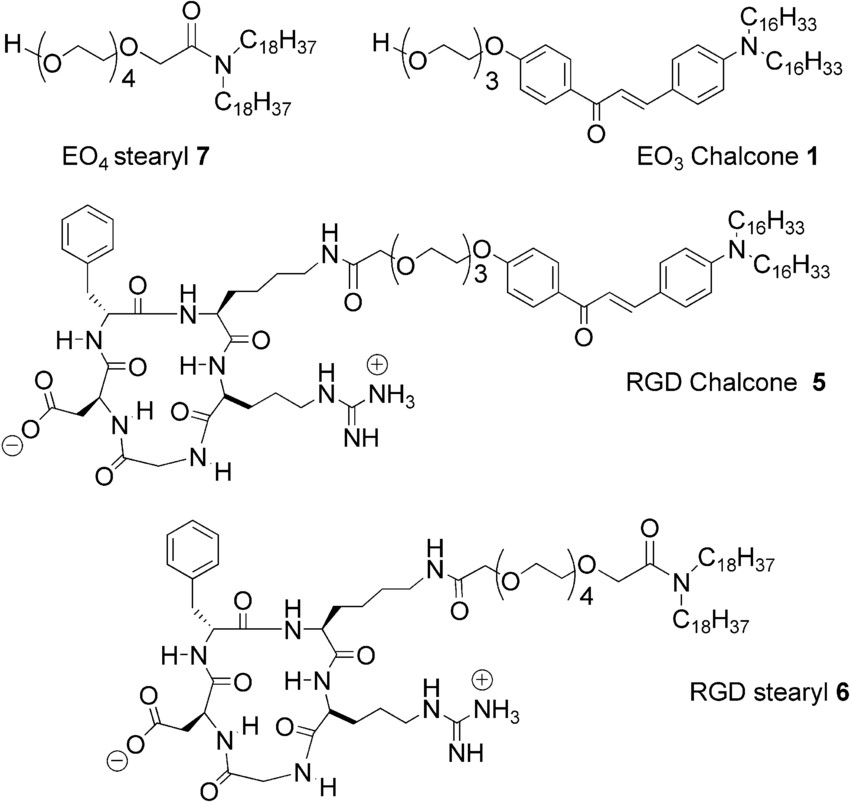 Figure 4: Chemical structures of the various synthetic lipids. They are either labeled by the chalcone chromophore or not and bear either an RGD peptide headgroup or a control hydroxyl group. (Marchi-Artzner et al., 2003)
Figure 4: Chemical structures of the various synthetic lipids. They are either labeled by the chalcone chromophore or not and bear either an RGD peptide headgroup or a control hydroxyl group. (Marchi-Artzner et al., 2003)
Applications of Synthetic Lipids
- Drug and Gene Delivery: Synthetic lipids are essential for the formation of lipid nanoparticles (LNPs) that protect sensitive genetic material such as mRNA during delivery. These LNPs ensure efficient cellular uptake and controlled release, as seen in mRNA vaccines for COVID-19. Their stability and tunable properties make synthetic lipids ideal for advanced gene therapy and precision medicine applications.
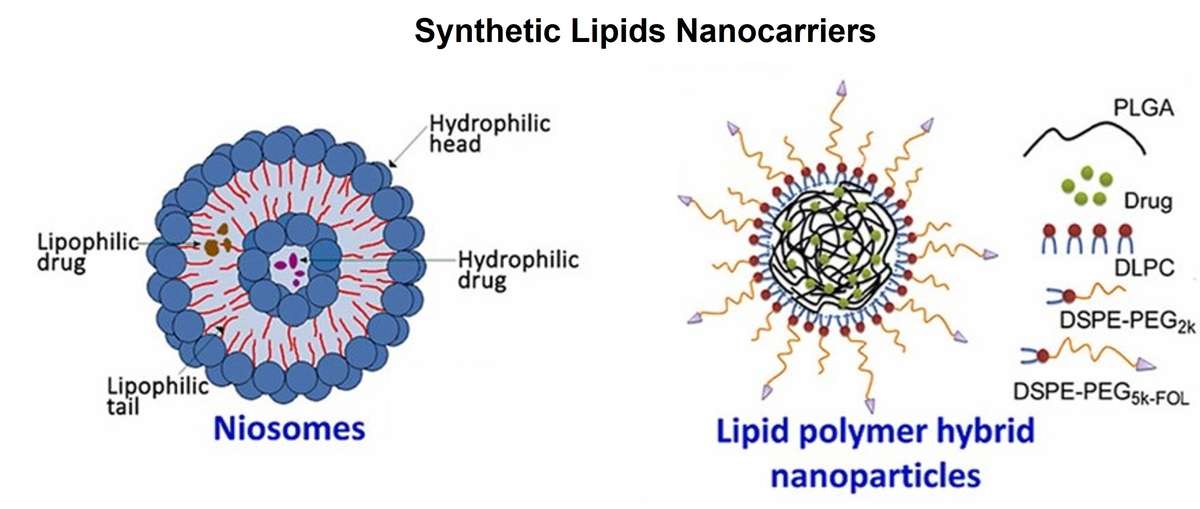 Figure 5: Synthetic lipid based nanocarriers. (Adapted from Kumar et al., 2022)
Figure 5: Synthetic lipid based nanocarriers. (Adapted from Kumar et al., 2022)
- Bioelectronics: Engineered synthetic lipids with conductive properties are used in bioelectronic devices and biosensors, bridging biology and technology. These lipids enable the development of sensitive, biocompatible interfaces for detecting biological signals, monitoring cellular activity, and improving diagnostic tools. Synthetic lipid-based bioelectronics are paving the way for advanced medical monitoring and therapeutic systems.
Comparative Analysis of Natural, Modified, and Synthetic Lipids
A comparison of natural, modified, and synthetic lipids is summarized in the table below.
| Aspect | Natural Lipids | Modified Lipids | Synthetic Lipids |
| Source | Extracted from plants, animals, or microbes | Natural lipids chemically or enzymatically altered | Entirely synthesized in the lab |
| Applications | Basic biological and nutritional functions | Enhanced industrial, pharmaceutical, and food uses | Advanced drug delivery, nanotechnology, and bioengineering |
| Advantages | Biocompatible, abundant in nature | Improved stability and functionality | Highly customizable with novel properties |
| Limitations | Limited stability, prone to degradation | Risk of toxicity, environmental concerns | Expensive production, potential immunogenicity |
Discover the limitless potential of natural, modified, and synthetic lipids with our premium product range. Whether you're advancing pharmaceutical research, creating innovative food solutions, or developing cutting-edge industrial applications, Creative Enzymes has the expertise and high-quality lipids to meet your needs. Contact us today and unlock the next breakthrough in your industry!
References:
- Giordano A, Provenza AC, Reverchon G, Baldino L, Reverchon E. Lipid-based nanocarriers: bridging diagnosis and cancer therapy. Pharmaceutics. 2024;16(9):1158.
- Kumar R, Dkhar DS, Kumari R, et al. Lipid based nanocarriers: Production techniques, concepts, and commercialization aspect. Journal of Drug Delivery Science and Technology. 2022;74:103526.
- Marchi-Artzner V, Lorz B, Gosse C, et al. Adhesion of Arg-Gly-Asp (RGD) peptide vesicles onto an integrin surface: visualization of the segregation of RGD ligands into the adhesion plaques by fluorescence. Langmuir. 2003;19(3):835-841.
- Ye Z, Xu YJ, Liu Y. Influences of dietary oils and fats, and the accompanied minor content of components on the gut microbiota and gut inflammation: A review. Trends in Food Science & Technology. 2021;113:255-276.
| Catalog | Product Name | EC No. | CAS No. | Source | Price |
|---|---|---|---|---|---|
| NSMZ-048 | Yeast Extract Polar | Inquiry | |||
| NSMZ-047 | Yeast Extract Total | Inquiry | |||
| NSMZ-046 | E. coli Extract Total | 1240502-50-4 | Inquiry | ||
| NSMZ-045 | Dolichol (13~21) | 153857-77-3 | Inquiry | ||
| NSMZ-044 | Brain Extract Polar | 86088-88-2 | Inquiry | ||
| NSMZ-043 | Heart Extract Polar | 86088-90-6 | Inquiry | ||
| NSMZ-042 | Liver Extract Total | 86088-91-7 | Inquiry | ||
| NSMZ-040 | E. coli CA | 796964-05-1 | Inquiry | ||
| NSMZ-038 | Ganglioside-Total | 383907-71-9 | Inquiry | ||
| NSMZ-035 | Brain Lyso PE | 475995-55-2 | Inquiry | ||
| NSMZ-034 | Egg Lyso PC | 97281-36-2 | Inquiry | ||
| NSMZ-032 | Ceramide (Egg) | 477243-06-4 | Inquiry | ||
| NSMZ-030 | Ceramide (Brain) | 497156-25-9 | Inquiry | ||
| NSMZ-024 | E. coli PE | 94581-14-3 | Inquiry | ||
| NSMZ-018 | E. coli PG | 796963-92-3 | Inquiry | ||
| NSMZ-017 | Heart PE | 477241-93-3 | Inquiry | ||
| NSMZ-015 | Heart PC | Inquiry | |||
| NSMZ-007 | Brain PS | 383907-32-2 | Inquiry | ||
| NSMZ-004 | Dilyso Heart CA | 383907-65-1 | Inquiry | ||
| NSMZ-003 | Brain PI(4)P | 475995-51-8 | Inquiry | ||
| NSMZ-002 | Ganglioside GM3 (Bovine Milk) | 1246353-19-4 | Inquiry | ||
| NSMZ-001 | Ganglioside GD3 (Bovine Milk) | 1246353-20-7 | Inquiry |